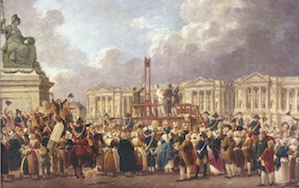But does a fixed classification not breed complacency? Marc Lecomte president of Antoine Moueix, the Saint-Émilion-based Cru Classé Château owner, part of Advini, says the age of an underperforming elite is over. “20 years ago there were second and third growths that were not making good wine but they have improved because of competition. If a château achieves 100 Parker Points and prices treble in one day, the neighbouring property will say: ‘I can do this too’. The market is now above the classification – now the Grand Cru have to work hard.”
CA Grand Cru is doing just that with its Grand Cru Classé châteaux. Technical manager Anne Le Naour talks us through it: “At Grand-Puy Ducasse and Rayne Vigneau they were focused on quantity not yield. The potential was here but it takes time to change vineyards to a quality-focus and rebuild the reputation.” Thierry Budin, who took over as CEO in 2006 and quickly went about modernising the company’s properties, has also warned that a hard-earned reputation can be damaged by selling to the wrong customer. “The worst thing that can happen to a wine is storage in bad conditions – eventually the reputation of the château could suffer. But I have started to see the change in China – they understand the wine now. China is today where Japan was 40
years ago.”
Despite the seemingly irascible thirst for fine wine in China in the last five years, the most recent data show value sales in China and Hong Kong have hit the skids (China grew just +1% while Hong Kong declined 31%). Bernard says in reality “the market is still growing” but there has been “de-stocking” and some of the more “opportunistic Chinese buyers” have left the market.
The US, another traditional destination for high-end Bordeaux (in 2012 growing 17% to €215m), tends to follow good vintages. 2009 and 2010 were both considered great years so the US and Chinese’s interests competed forcing en primeur prices to rocket. “These two forces put pressure on the price – plus the UK buyers that also sell to Hong Kong. But for the 2011, châteaux did not cut the prices to reflect the vintage – they didn’t go back to reality,” says Bernard.
“En primeur makes me depressed,” says Andrew Thomas, UK commercial manager of negociant and producer Yvon Mau. “In 2011, on the back of 2010, châteaux owners were too greedy. The price didn’t reflect the conditions. It was about getting the right balance – like Mouton Rothschild who took 2011 prices down 33% and sold out. The 2012 was bloody good but the press [immediately] nailed it so there was a lack of confidence among buyers. Prices dropped 30% in 2012. But a lack of confidence in en primeur meant an opportunity for older vintages.”
The middle classes
CA Grands Crus Classés’ Château Meyney is known as the château that the 1855 classification forgot. It’s a familiar tale of middle class woe in Bordeaux – châteaux of venerability, producing wines of distinction that are untitled. The newly EU-ratified Cru Bourgeois classification of the left bank’s Médoc is starting to make an impression though – offering consumers security beyond the classified growths. Priced at around £10-20 a bottle, these wines are tested for quality yearly – a rare thing indeed in Bordeaux (though Saint-Émilion Cru Classe does test every 10 years). Cru Bourgeois has appeared on labels for 250 years but it is only since 2010 that the scheme has taken off as an official classification with criteria to entry (the scheme had a false dawn in 2003, collapsing under revolt of disaffected châteaux).




